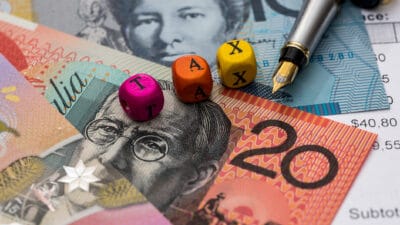Soaring interest rates have made the return from term deposits much more attractive. However, ASX shares should also be considered for the long term.
The Reserve Bank of Australia (RBA) cash rate has gone from almost 0% to 4.35%. Aussies can now get good term deposit rates compared to two years ago.
According to Canstar, there are some term deposits that offer an interest rate of at least 5% for 12 months.
I'd always recommend that some people should always keep some cash aside as an emergency fund. I think cash, deposited in a government-guaranteed savings account with a safe bank, is the safest and most flexible in the short term.
But, over the long term, it could make a lot of sense to invest in ASX shares. Let's compare term deposits to ASX shares.
Term deposit return
If we put $10,000 into a term deposit for a 12-month period which pays annually, we typically have to wait until the end of the term to get the interest and for the bank to return the money.
A $10,000 investment would generate $500 of annual interest and the capital amount would still be worth $10,000 at the end of the period. If they spent that $500 and did another 12-month term with the remaining $10,000, it'd make another $500 (if the interest rate was still 5%).
The term deposit holder could decide to re-invest the $500 instead and it'd be $10,500 making interest, but they wouldn't be able to spend any of that money. If $10,500 earned 5%, they'd get $525 of interest at the end of the period.
What about ASX shares?
ASX shares have the ability to pay dividends and deliver growth.
Investing in the stock market does come with volatility – share prices can go down, but they can also go up over time.
Let's think about an ASX blue-chip share like Telstra Group Ltd (ASX: TLS), which has an enviable market position in the mobile market. Steady growth of subscribers and other revenue is helping drive the company's profit higher.
I don't have a crystal ball, but Telstra has been steadily growing its dividend in the last few results and it could keep growing. Analyst estimates on Commsec suggest Telstra could pay a fully franked dividend yield of 4.5%, or a grossed-up dividend yield of 6.5%, in FY24.
If someone invested $10,000 into Telstra shares, they're projected to get $650 of grossed-up income for FY24. That person could spend all of that money and could still get a bigger dividend in FY25. The Commsec projection suggests a fully franked dividend yield of 4.8% or a grossed-up dividend yield of 6.8% for FY25 at the current Telstra share price. That would be grossed-up income of $680.
Good ASX shares can pay appealing dividends and also deliver dividend growth.
That's not even mentioning the potential to supercharge compounding by re-investing the dividends into more shares. An investor can decide to receive the dividends and invest in different ASX shares, or activate the dividend reinvestment plan (DRP) of a company (if it has one) and receive more shares (brokerage free) instead of cash.
In my mind, if people are looking for their money to make a return, I'd choose ASX shares because of that long-term growth element. One of my favourite blue chips for potential long-term dividends and growth is Wesfarmers Ltd (ASX: WES) – the owner of Bunnings and Kmart – which I recently wrote about here.









